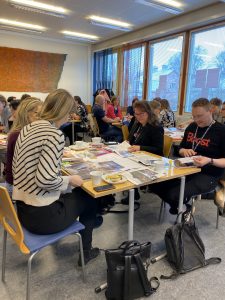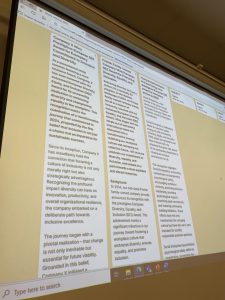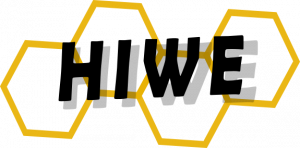Towards inclusive workplaces
Are Finnish companies and other work organisations ready to welcome international workforce? This is a major question to consider when talking about recruitment of highly skilled internationals. It is not only about how internationals can develop their employability, but also about organisations and their ability to employ international talent.
Why focus on inclusion?
We suggest that organisations focus on becoming inclusive workplaces in order to become better at welcoming and employing international talent.
“In inclusive environments, individuals of all backgrounds – not just members of historically powerful identity groups – are fairly treated, valued for who they are, and included in core decision making” (Nishii, 2013, p. 1754)
Inclusion refers to voluntary actions (organizational and managerial practices) that level the playing field. These provide equal access to opportunities for all employees irrespective of their social identity. An inclusive workplace encourages collaboration and fairness throughout the organisation so that all employees can participate and contribute to their full potential. (Shore et al., 2018.)
Co-creating ways to develop inclusive workplaces
The HIWE project carried out a full-day workshop that tackled two questions: What is an inclusive workplace? How can we develop and foster inclusivity? We had 20 participants representing multiple viewpoints and organisations (public sector, companies, HEIs, NGOs and internationals themselves) co-creating answers to these questions. Here, we share some of the insights from the workshop.

Gazing into the future to inform present
To open space for imagining desired futures and ways to reach them, one of the workshop’s tasks was for the participants to imagine that it is year 2054 and they are managers of an organisation that has just won a European DEI Award for being diverse, equal and inclusive. We asked them to write a press release about the award and the steps that had brought them the award.

The press releases from the future included important actions and practices that lead towards an inclusive workplace:
Cultural shift
The change starts from a cultural shift whereby we relate to each other as human beings, believe in inclusion and see its benefits. Implementing for example two-way coaching and mentoring between management and international talents is both a way to create awareness of the benefits and to facilitate learning.
The cultural shift also implies considering internationals’ views in organisational decisions and as part of everyday work practices.
Building inclusive workplaces is of course not just about internationals, but about inclusion for all – for example, employees across generations. Inclusivity can also mean changing the working language and/or implementing bilingual processes.
The cultural shift can be supported by creating a strategy and future vision for inclusivity. Importantly, the implementation of the strategy needs to be monitored, e.g. by an employee happiness index.
Practices and structures
An organisation worthy of a future DEI award invests in developing their HR practices. Focus needs to be on growing international recruitment, introducing trainee programs and increasing international mobility. Such an organisation promotes inclusive leadership, for example by offering training programs to address unconscious bias and structural racism in recruitment processes and in the organisation.
Implementing structures to support inclusion, for example by establishing a DEI committee, is also an important action. Establishing psychological safety and support, for example by having confidential feedback channels, are needed too.
Inclusive workplaces also benchmark other organisations. They are active in creating and participating in employers’ networks to share knowledge and learn from best practices.
Community engagement
Moreover, an award-winning organisation is active in community building both in-house and within its wider community. The organisation organises in-house after-work events and celebrates holidays from various cultures, amongst other practices. Externally, it develops partnerships with local organisations, sponsors community events, supports educational initiatives that promote diversity and inclusion beyond the workplace.
An organisation should look beyond internal processes to actively screen its own value chain to make sure it matches with its DEI values.
Co-creating policy recommendations
By bringing the different stakeholders together, we got a plethora of ideas for what should be done to make Finnish workplaces more inclusive. We are now going through the results and will use them to write policy recommendations in co-operation with our stakeholders. For example, we will consider what kinds of incentives or support could be offered to work organisations to enable them to become more inclusive.
Stay tuned to hear more about the process of co-creating policy recommendations!
Nishii, L. H. (2013). The benefits of climate for inclusion for gender-diverse groups. Academy of Management journal, 56(6), 1754-1774.
Shore, L. M., Cleveland, J. N., & Sanchez, D. (2018). Inclusive workplaces: A review and model. Human Resource Management Review, 28(2), 176-189.
